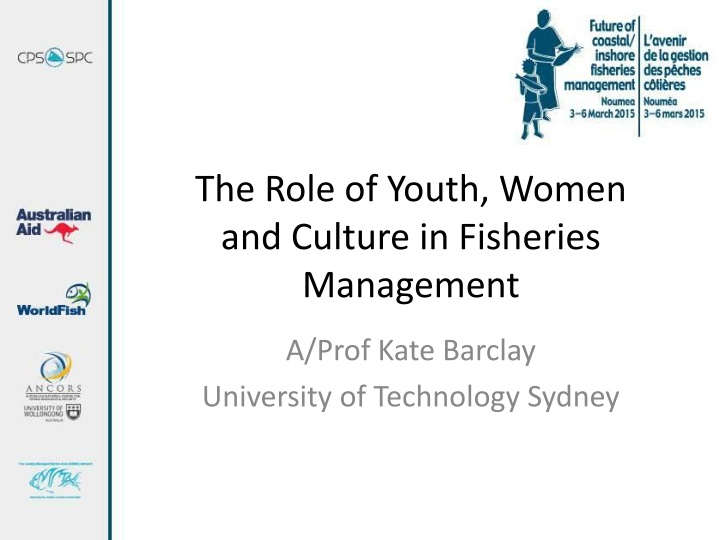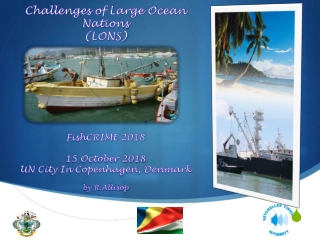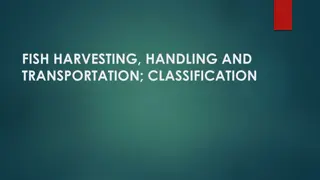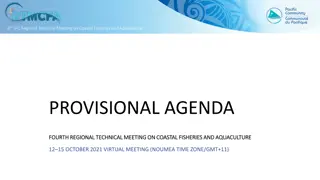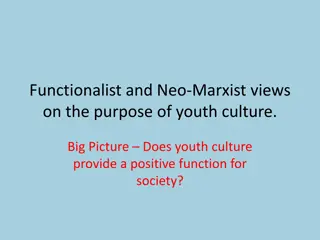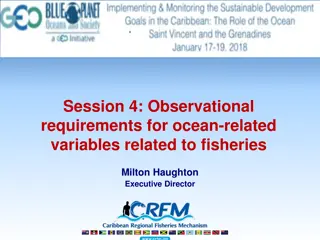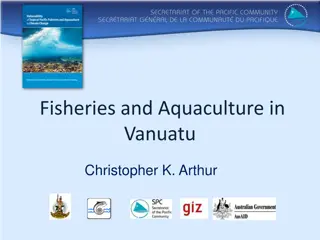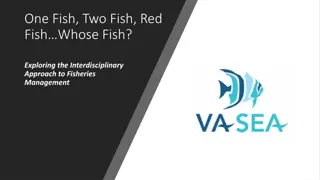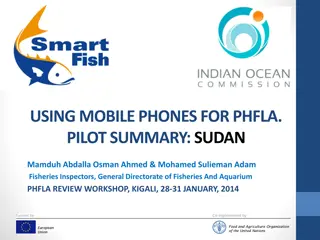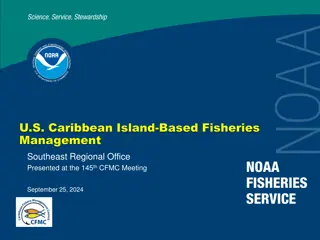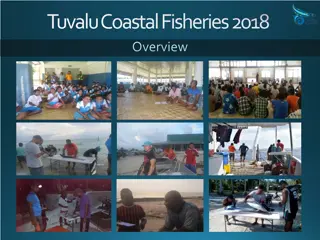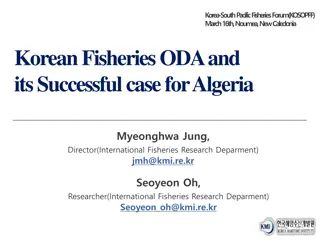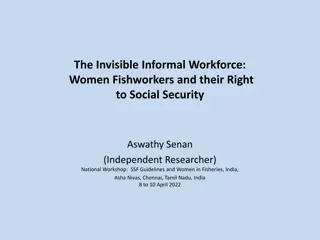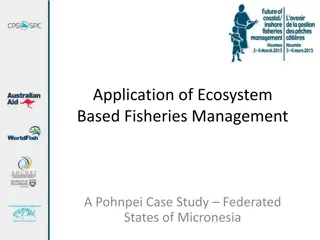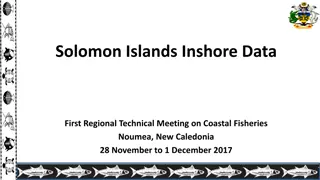Youth, Women, and Culture in Fisheries Management
The role of youth, women, and culture is crucial in fisheries management to address shortcomings in conventional approaches and promote effective, sustainable development. This includes a focus on broader fish chains, ecological reasons for women's involvement in fishing, and new approaches like Aquatic Agricultural Systems in the Solomon Islands. Bibliography includes works on local capitalisms, inland aquaculture, gender in fisheries, and interactive governance for sustainable fisheries.
Download Presentation

Please find below an Image/Link to download the presentation.
The content on the website is provided AS IS for your information and personal use only. It may not be sold, licensed, or shared on other websites without obtaining consent from the author.If you encounter any issues during the download, it is possible that the publisher has removed the file from their server.
You are allowed to download the files provided on this website for personal or commercial use, subject to the condition that they are used lawfully. All files are the property of their respective owners.
The content on the website is provided AS IS for your information and personal use only. It may not be sold, licensed, or shared on other websites without obtaining consent from the author.
E N D
Presentation Transcript
The Role of Youth, Women and Culture in Fisheries Management A/Prof Kate Barclay University of Technology Sydney
Why Does it Matter? Address shortcomings in conventional fisheries management!!!! Effective, sustainable SSF development Conventional perspective: Male focus Biology/ecology focus Image source: therebelmum.com
Fish Chains Similar to supply chains but broader Four interrelated concerns food security livelihoods social justice ecosystem health
Culture & SSF in Melanesia Village culture Cash & non-cash activities National development project culture Donor & international development culture Photo source: Kate Barclay
Danika Kleibers work Ecological reasons, women fish! 42% of fishers 25% of total catch Women fishers overlooked as key variables Women evaporate in data collection Collecting Shells at Low Tide , by Hokusai, Japan, c. 1832-1834. Colour on silk. Osaka Municipal Art Museum, Osaka. Source: http://www.nippon.com/en/curren ts/d00021/
WorldFish in Solomon Islands Aquatic Agricultural Systems (AAS) New approach coastal resource management Highlights centrality of women! Photo source: Kate Barclay
Bibliography Barclay, K., Kinch, J. (2013). Local Capitalisms: Sustainability in Coastal Fisheries , in McCormack, F. and Barclay, K. (eds) Engaging with Capitalism: Cases from Oceania, Research in Economic Anthropology series, No. 33, Emerald, Bingley, United Kingdom. Bennett, G., Cohen, P., Schwarz, A.M., Rafe, M., Teioli, H., Andrew, N. (2014). Solomon Islands: Western Hub scoping report. CGIAR Research Program on Aquatic Agricultural Systems. Penang, Malaysia. Project Report: AAS-2014-14. Jones C, Schwarz AM, Sulu R and Tikai P. 2014. Foods and diets of communities involved in inland aquaculture in Malaita Province, Solomon Islands. Penang, Malaysia: CGIAR Research Program on Aquatic Agricultural Systems. Program Report: AAS-2014-30. Kleiber, D., Harris, L.M., and Vincent, A.C.J. 2014. Gender and small-scale fisheries: a case for counting women and beyond. Fish and Fisheries. DOI: 10.1111/faf.12075 Kooiman, J., M. Bavinck, S. Jentoft and R. Pullin (eds). (2005). Fish for Life: Interactive Governance for Fisheries. MARE Publication Series, No. 3, Amsterdam University Press, Amsterdam.
